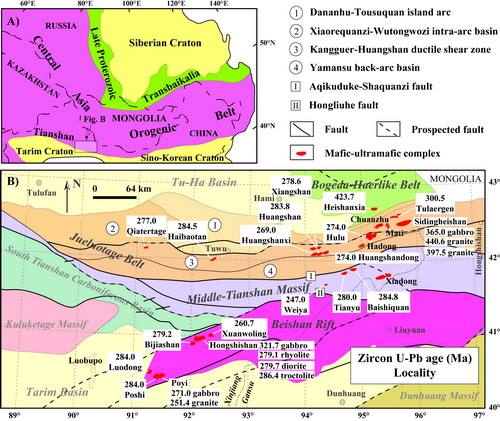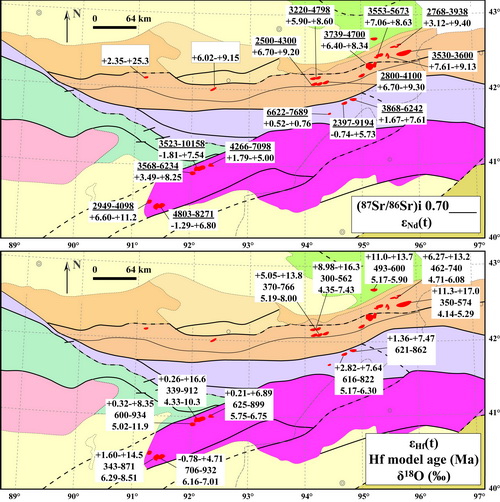Postdoctor SU Benxun and his teacher QIN Kezhang use 120 whole rock Rb–Sr, Sm–Nd isotopic analyses, and a summary of 347 published zircon Hf–O isotopes from 17 samples of mafic–ultramafic complexes in the Eastern Tianshan (including Jueluotage Belt and Middle Tianshan Massif) and Beishan to map the isotopic variations.
These observations demonstrate that the mantle sources beneath the Eastern Tianshan and Beishan are compositionally heterogeneous, which presumably result from significant and variable degrees of subduction-related modification.
They therefore suggest that the late Paleozoic subcontinental lithospheric mantle beneath the Jueluotage Belt was modified by slab-derived melts and fluids during the subduction of the Junggar Ocean, whereas the mantle beneath the Beishan Rift was influenced mainly by slab-derived fluids during the subduction of the South Tianshan Ocean. The unique similarities of the Middle Tianshan mafic–ultramafic complexes reflect a two-stage modification of their mantle source, namely the sequential subduction of the early South Tianshan Ocean, followed by subduction of the Junggar Ocean. Thus, the subduction-induced mantle heterogeneity beneath the CAOB is probably regional in scope.

Fig. 1. (A) A geologic map of the study area, showing the location of the Eastern Tianshan and Beishan in the Central Asian Orogenic Belt. (B) Regional geological map of the Eastern Tianshan and Beishan Rift showing the distribution and U–Pb ages of Paleozoic mafic–ultramafic complexes. (Image by SU)

Fig. 3. Nd–Sr isotopic map and Zircon Hf–O isotopic and Hf model age map for mafic–ultramafic complexes in the Jueluotage, Middle Tianshan and Beishan. (Image by SU)
Su et al. Subduction-induced mantle heterogeneity beneath Eastern Tianshan and Beishan: Insights from Nd-Sr-Hf-O isotopic mapping of Late Paleozoic mafic-ultramafic complexes. Lithos. 2012, 134-135: 41-51 (Download Here)